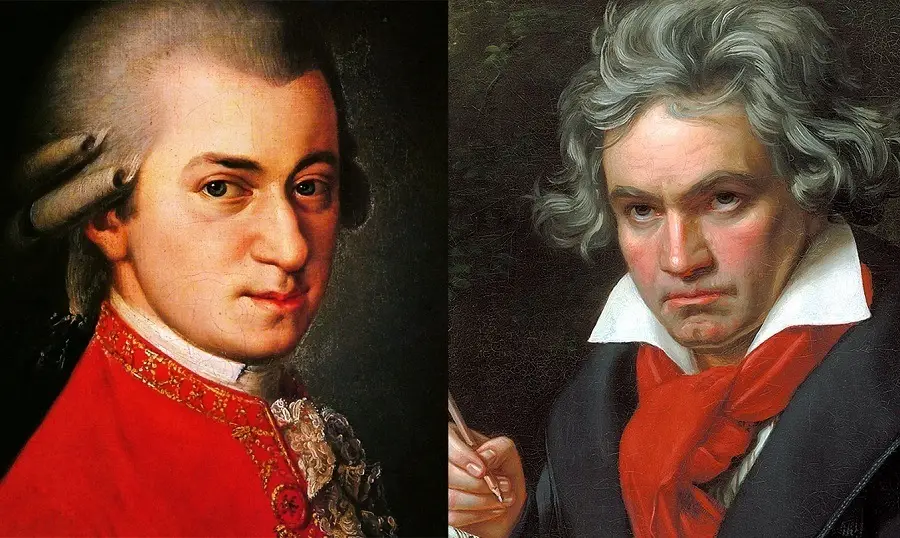Ludwig van Beethoven, one of the most influential composers in the history of Western music, composed nine symphonies that have become staples of the classical repertoire. While his Symphony No. 5 and Symphony No. 9 are celebrated worldwide, his Symphony No. 8 in F Major, Op. 93, often remains in their shadow. This article delves into the background, structure, and unique characteristics of Symphony No. 8, shedding light on its significance and why it deserves greater recognition.
I. Background of Symphony No. 8
1. Composition and Context
Beethoven composed Symphony No. 8 in 1812, a period marked by both personal and political turmoil. Despite the challenges, he produced a work that radiates joy and humor, a stark contrast to the more dramatic and monumental Symphony No. 7, which he had completed the previous year.
2. Premiere and Reception
The symphony premiered on February 27, 1814, in Vienna, conducted by Beethoven himself. Although it did not receive the immediate acclaim of some of his other works, it was appreciated for its wit and inventiveness.
3. Influence and Legacy
Symphony No. 8 has influenced many composers and continues to be a favorite among conductors and orchestras. Its innovative use of form and orchestration showcases Beethoven’s genius in creating profound musical experiences.
II. Analysis of Symphony No. 8
1. First Movement: Allegro vivace e con brio
The first movement, marked Allegro vivace e con brio, is energetic and full of life. It follows the traditional sonata form, but Beethoven infuses it with playful elements and surprising twists.
Themes and Motifs
The movement begins with a lively theme that sets the tone for the entire symphony. Beethoven uses syncopation and unexpected accents to keep the listener engaged.
Development and Recapitulation
The development section explores the main themes in various keys and textures, showcasing Beethoven’s mastery of counterpoint and orchestration. The recapitulation brings back the initial themes with added richness and complexity.
2. Second Movement: Allegretto scherzando
The second movement, Allegretto scherzando, is a light-hearted and whimsical piece, often compared to a musical joke.
Structure and Character
This movement is in ternary form (ABA), with a playful A section and a contrasting B section that adds depth and variety. The use of pizzicato strings and humorous wind interjections highlight Beethoven’s wit.
Orchestration and Innovation
Beethoven’s innovative orchestration in this movement includes the use of the metronome-like ticking in the winds and strings, creating a charming and unique soundscape.
3. Third Movement: Tempo di Menuetto
The third movement, Tempo di Menuetto, returns to a more traditional minuet and trio form, but with Beethoven’s characteristic twists.
Melodic and Rhythmic Elements
The minuet features a graceful melody with elegant phrasing, while the trio section provides a contrasting rustic feel. Beethoven’s use of dynamics and articulation adds to the movement’s charm.
Formal Structure
The clear structure of this movement, with its balanced phrases and repetitions, provides a moment of repose before the lively finale.
4. Fourth Movement: Allegro vivace
The final movement, Allegro vivace, is a spirited and joyous conclusion to the symphony.
Themes and Development
The movement begins with a vigorous theme that propels the music forward. Beethoven’s use of rhythmic drive and dynamic contrasts keeps the listener on the edge of their seat.
Coda and Conclusion
The coda of the fourth movement is particularly noteworthy for its exuberance and complexity. Beethoven brings the symphony to a rousing and satisfying conclusion, leaving a lasting impression.
III. Unique Characteristics of Symphony No. 8
1. Humor and Playfulness
Symphony No. 8 is often noted for its humor and playfulness, a reflection of Beethoven’s lighter side. This is evident in the second movement’s metronome-like ticking and the surprising accents throughout the symphony.
2. Compactness and Economy
Unlike some of his other symphonies, Symphony No. 8 is relatively short and compact. Beethoven achieves a great deal with a smaller scale, demonstrating his ability to create profound music within a concise framework.
3. Innovative Orchestration
Beethoven’s innovative use of orchestration in Symphony No. 8 includes unique combinations of instruments and creative use of dynamics and articulation. This adds to the symphony’s charm and distinctiveness.
IV. Interpretation and Performance
1. Conducting Challenges
Conductors often face challenges in interpreting Symphony No. 8 due to its subtle humor and intricate orchestration. Balancing the playful elements with the structural clarity requires a deep understanding of Beethoven’s intentions.
2. Notable Performances
Many renowned conductors and orchestras have performed Symphony No. 8, each bringing their own unique interpretation. Notable recordings include those by Herbert von Karajan, Leonard Bernstein, and Carlos Kleiber, each offering different insights into the symphony’s character.
3. Listener’s Experience
For listeners, Symphony No. 8 offers a delightful and engaging experience. Its lively themes, unexpected twists, and overall sense of joy make it a rewarding piece to listen to repeatedly, revealing new details with each hearing.
See Also: Classical Music for Kids: A Deep Dive into Timeless Melodies
V. Conclusion
Beethoven’s Symphony No. 8 is an underrated gem that deserves greater recognition. Its humor, compactness, and innovative orchestration showcase Beethoven’s genius in a unique light. While it may not have the immediate impact of some of his more famous works, it offers a profound and delightful musical experience that continues to inspire musicians and listeners alike.
By exploring the background, structure, and unique characteristics of Symphony No. 8, this article aims to shed light on its significance and encourage a deeper appreciation of this remarkable work. Whether you are a seasoned classical music aficionado or a newcomer to Beethoven’s symphonies, Symphony No. 8 has much to offer, and its playful charm is sure to captivate and delight.

